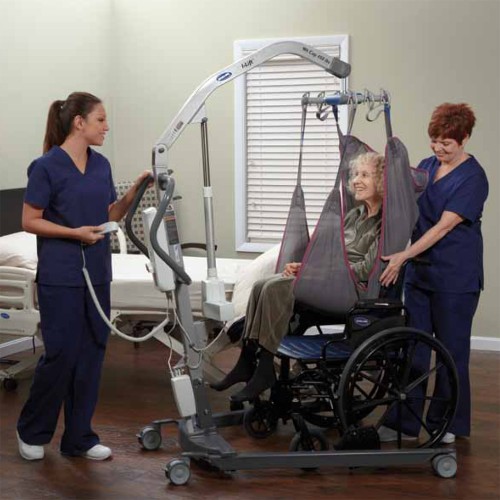This guide has been put together to minimize the risk or accidents or injuries occurring during lifting operations at work. It offers a comprehensive view of how to use lifting slings safely, effectively and with minimal risk to employees and the general public.
Before the Lift
Careful planning is essential for a safe and efficient lift. Before the lift operation takes a place a plan should be drawn up, covering a number of points.
The location of the lift should be considered including access to the site, any potential obstructions and the proximity of the site to the general public. The site’s terrain should also be studied to ensure any vehicles can safely travel across it. The same considerations should also be given to the target location of the lift, i.e. where the load is going to be set down. Establish exclusion zones to ensure no members of the public or unaware staff come into close proximity of the lift.
Next, consider the actual lifting operation. Ensure adequate lifting slings, accessories and machines are chosen for the size, weight and type of lift to be performed. Plan for how the load is to be slung and secured, as well as how the slings are to be removed.
Finally, the members of staff who are to perform the lift should be well instructed on the lifting operation. They should be fully trained to operate whatever lifting equipment is going to be used and how they are expected to use it. It is important to inform all relevant members of staff of the entire lifting plan and ensure they are comfortable with it. A signaller should also be present for the lift to guide the operator as well as ensure the exclusion zone is enforced.
Securing the Slings
As part of the planning process you must consider how you plan to secure the slings to the load. Common methods include the use of eyebolts, dynamo bolts, hoisting rings and shackles. In every case, the load will determine the number and size of attachments you use although each attachment has its own advantageous and disadvantages.
Eye bolts are strong, sturdy attachments as long as they are not used in the same plane as the eye. A two leg sling should also be used to avoid overloading the bolt. Vertical and inclined vertical lifts can be performed. Dynamo bolts, on the other hand, should only be used for vertical lifts as even a slight incline can overload them, causing them to fail.
Hoist rings, on the other hand, can swivel and hence remove the requirement for shim washers. They do not need down-rating and can pivot through 90° to suit the angle of the sling.
Shackles are a particularly strong method on attachment, although unlike hoist rings, must be down-rated depending on the incline of the lift. As a guide line, at 45° the shackles perform at 70% of their rated limit. At 90° from the in-line this is reduced to 50%.
Hooks
The next thing to consider is the hook that will be used during the lift. Take into account the attachment points and the environment of the lift as well as the size and weight of the load. The type of sling will also influence which hook you select. A double latch must be used for continuous webbing slings to prevent it slipping out. In most other circumstances, a conventional safety catch is permissible.
Slings
Finally, select which and how many slings to use for the lift. There are a number of things to consider here, including the rated limits of the slings, how you plan to secure the slings and how many slings are required to perform the lift. Consult the user manual for the sling’s rated limits, remembering to down-rate them accordingly depending on the angle at which they are to be secured.
There are several methods of securing the slings, ensure at least two members of staff are comfortable with the selected method and that the attachment is checked at least twice by separate staff to minimise the chance of accident or injury.

